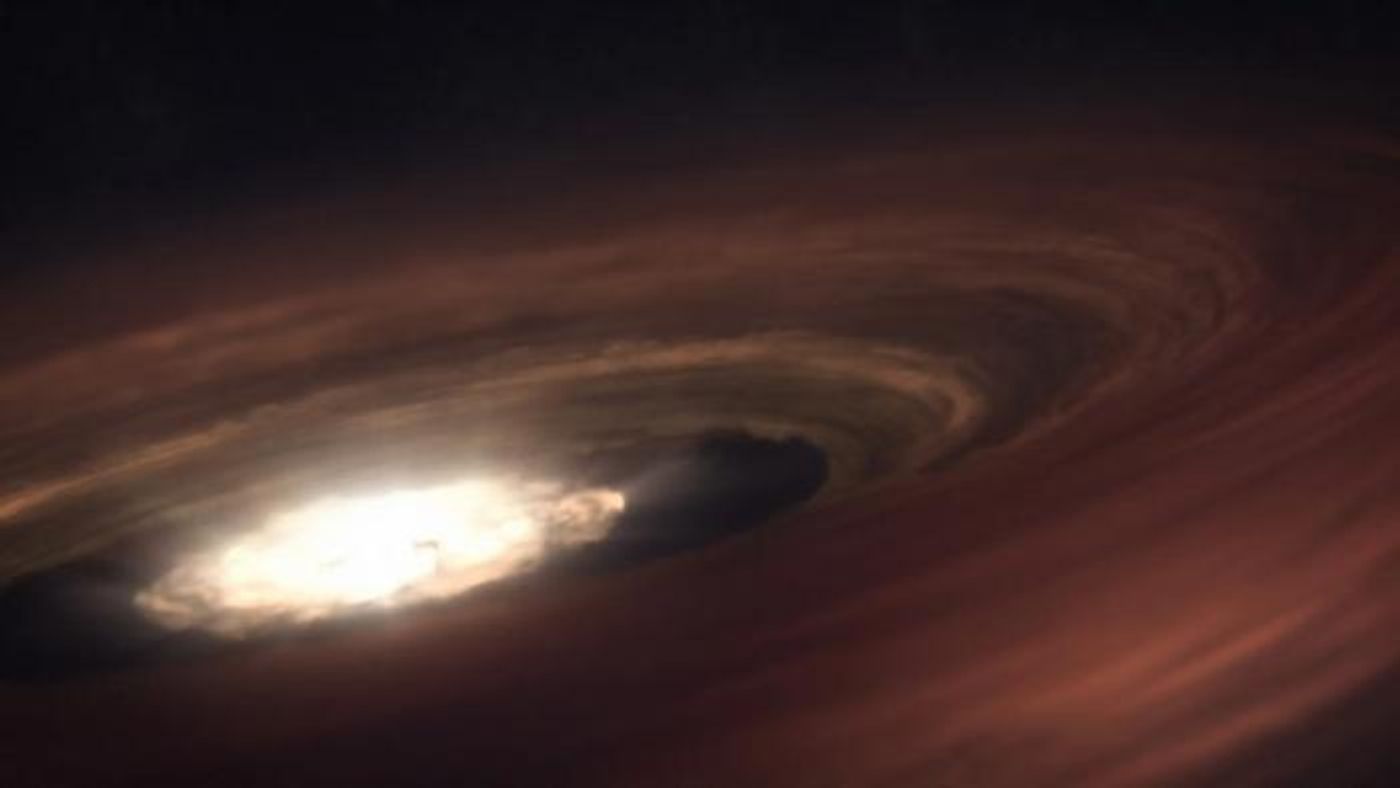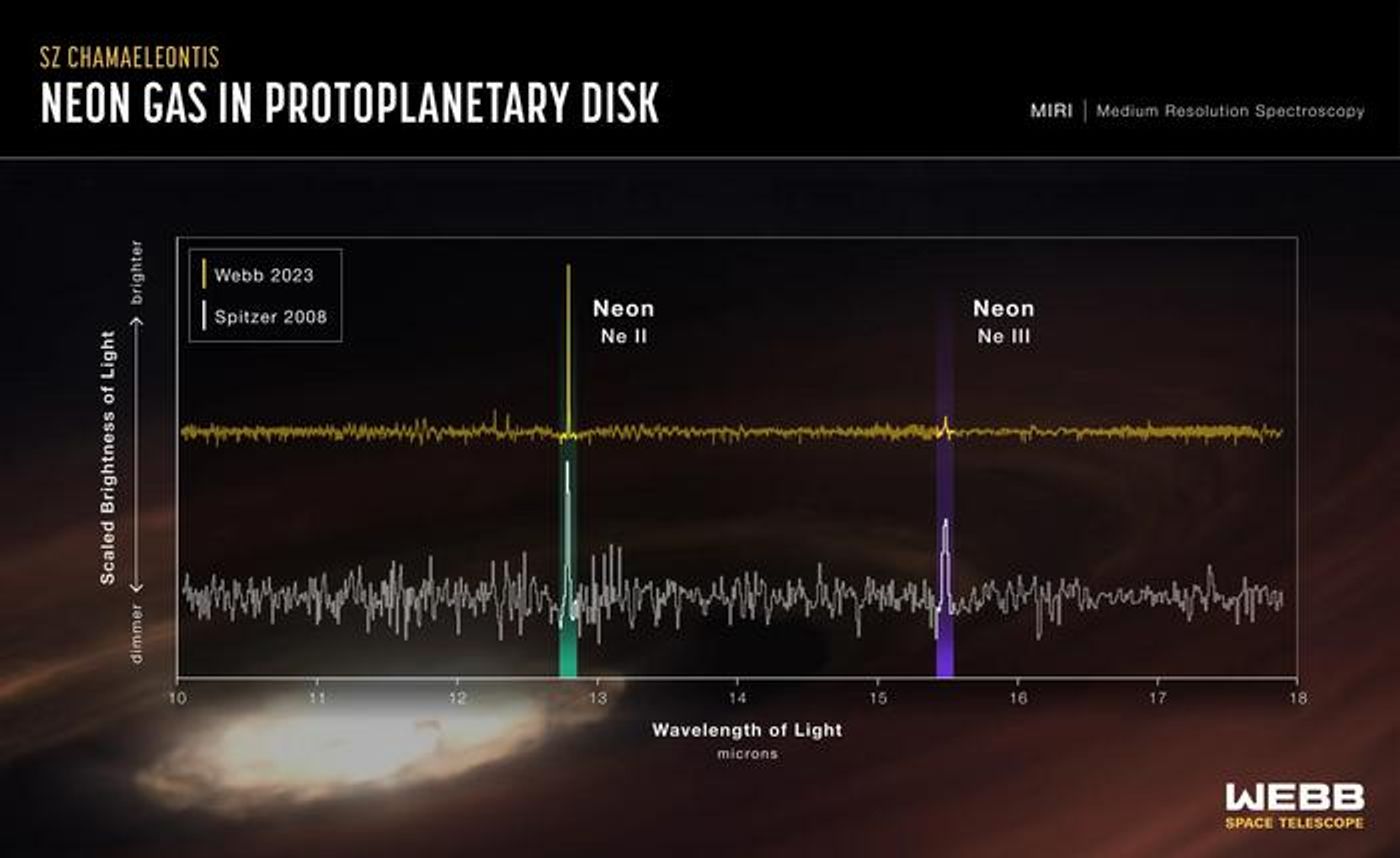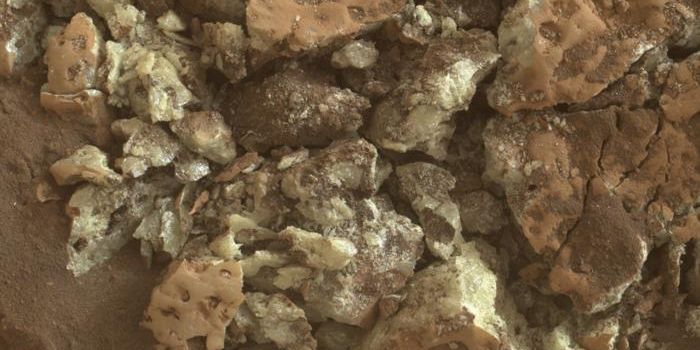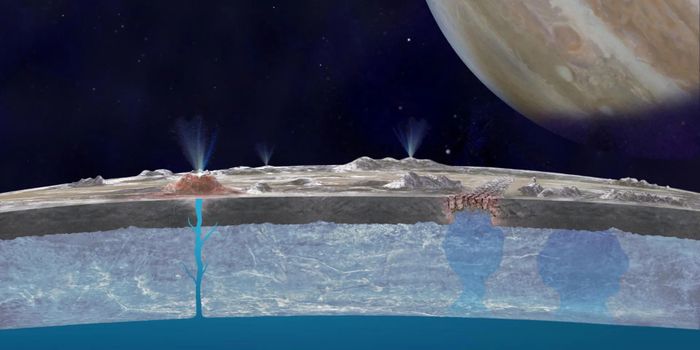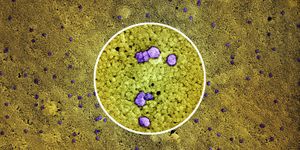Evolution of Young Planetary Systems: The Neon Signature of SZ Cha
A recent study published in Astrophysical Journal Letters examines data provided by NASA’s now-retired Spitzer Space Telescope and the agency’s James Webb Space Telescope (JWST) involving the identification of traces of the element neon that comprises the protoplanetary disk orbiting the young main sequence, or Sun-type star, SZ Chamaelontis, also known as SZ Cha, which is located approximately 575 light-years from Earth. This discovery of the element neon is profound since it could help scientists better understand the formation and evolution of not only exoplanetary systems, but also how our own solar system formed, as well.
Artist rendition of the young Sun-like star, SZ Chamaeleontis (SZ Cha), orbited by disk of dust and gas with could lead to the formation of planets. (Credit: NASA, ESA, CSA, Ralf Crawford (STScI))
This study began back in 2008 when Spitzer used its infrared capabilities to measure the neon ratio in SZ Cha, and JWST observed these measurements in 2023 as having decreased by more than 85 percent since the first observations by Spitzer in 2008. The researchers postulate that such a drastic decrease in neon could provide insights into planetary formation and evolutionary processes within the young disk, specifically pertaining to what’s known as photoevaporation, which is when high-energy radiation causes the disk to slowly evaporate and transition from an ultraviolet-dominated disk to an X-ray-dominated photoevaporation of the young disk.
Data from NASA’s James Webb and Spitzer space telescopes displaying a decrease in neon within the disk orbiting the star SZ Chamaeleontis (SZ Cha) between 2008 and 2023. (Credit: NASA, ESA, CSA, Ralf Crawford (STScI))
“Planets are essentially in a race against time to form up in the disk before it evaporates,” said Dr. Thanawuth “Atom” Thanathibodee, who is a postdoctoral associate at Boston University and a co-author on the study. “In computer models of developing systems, extreme ultraviolet radiation allows for 1 million more years of planet formation than if the evaporation is predominately caused by X-rays.”
The team hypothesizes that the decrease in neon could be the result of fluctuations in wind patterns within the disk that absorbs ultraviolet light with X-rays remaining to hammer the young and evolving disk. The team also says Spitzer was able to observe the system during a period when these winds were calm, whereas such young systems are known to experience high winds within the system during its formation. Going forward, the team hopes to continue to use JWST for additional observations of SZ Cha to learn more about the young system and the secrets behind its formation and evolutionary processes.
What new discoveries will astronomers make about SZ Cha in the coming years and decades, and how will these findings help us better understand the formation and evolution of young star systems? Only time will tell, and this is why we science!
As always, keep doing science & keep looking up!
Sources: Astrophysical Journal Letters, EurekAlert!, The Astrophysical Journal, NASA
